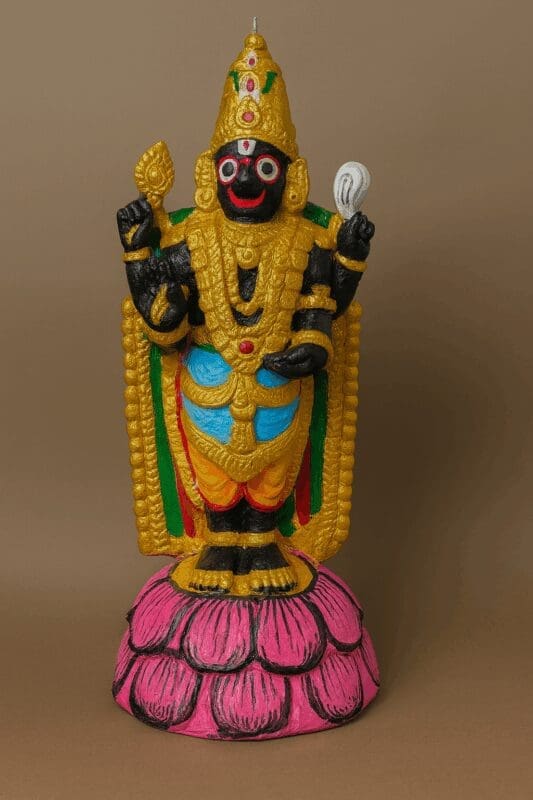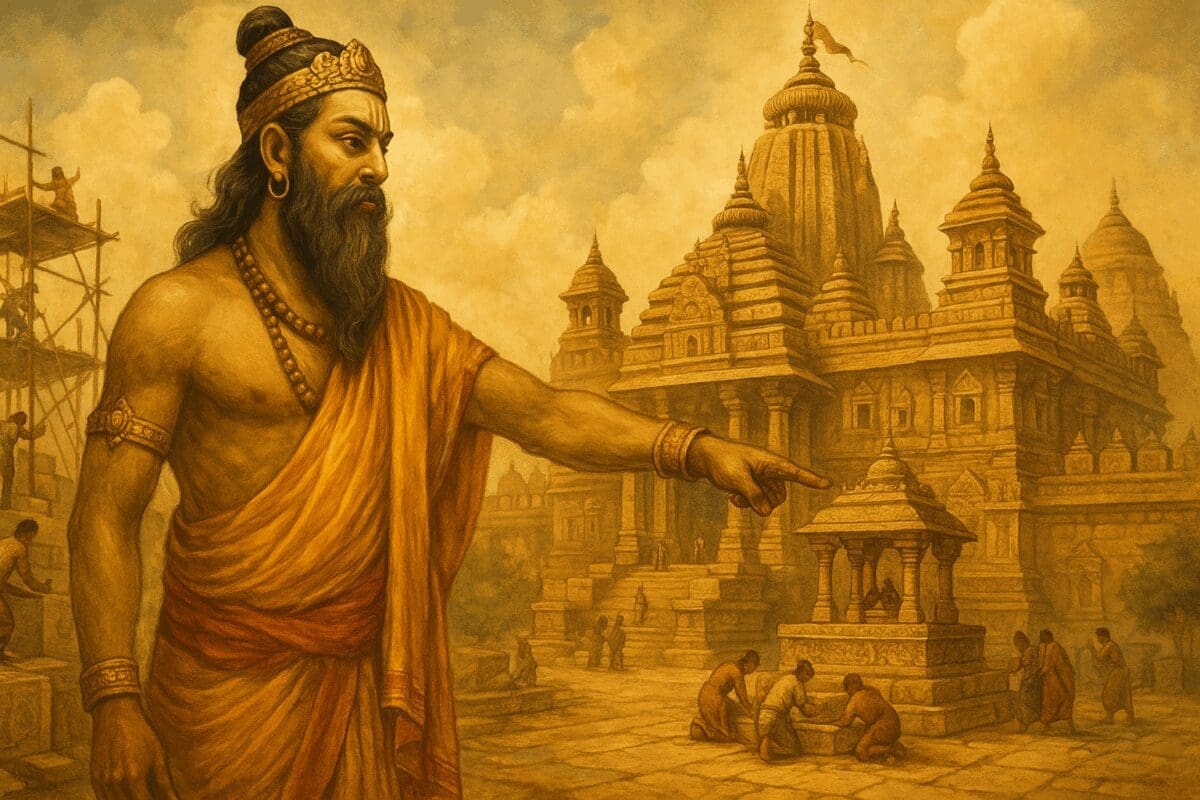odia article, Shri Jagannath purana
A Temple Takes Shape: Vishwakarma’s Divine Architecture (Ch. 37)
 A Temple Takes Shape: Vishwakarma’s Divine Architecture (Ch. 37)
A Temple Takes Shape: Vishwakarma’s Divine Architecture (Ch. 37)
Chapter 37 of “Sri Jagannath Puran” transports us to the heart of Purushottama Khetra, where the grand Jagannatha Temple is miraculously constructed under the divine guidance of Vishwakarma, the celestial architect. As a historian fascinated by the intersection of faith, artistry, and architecture, this chapter offers a captivating glimpse into the creation of this sacred space, imbued with mystical elements and symbolic significance.
Vishwakarma: The Divine Architect
Vishwakarma, a revered figure in Hindu mythology, is the celestial architect and craftsman of the gods. He is credited with creating magnificent palaces, celestial weapons, and even the universe itself. His presence in the “Sri Jagannath Puran” signifies the divine involvement in the construction of the Jagannatha Temple, elevating it to a sacred space imbued with celestial energy.
Historically, temple construction in ancient India was a grand undertaking, often involving royal patronage, skilled artisans, and elaborate rituals. The text reflects this tradition by portraying Vishwakarma as the master builder, guiding and overseeing the construction process with his divine expertise.
The Temple’s Mystical Construction
The chapter describes how Vishwakarma, at the behest of Lord Brahma, constructs the Jagannatha Temple with astonishing speed and precision. The temple is portrayed as an architectural marvel, adorned with intricate carvings, towering spires, and expansive courtyards. This description reflects the grandeur and artistic excellence associated with temple architecture in ancient India.
The narrative also emphasizes the mystical dimensions of the construction process. Vishwakarma is said to have employed divine powers and celestial materials to create the temple, imbuing it with sacred energy and making it a fitting abode for Lord Jagannatha.
Symbolism and Significance of the Temple
The Jagannatha Temple, as described in the text, is not merely a physical structure but a microcosm of the universe, representing the cosmic order and the interconnectedness of all creation. Its various shrines, mandapas (halls), and courtyards symbolize different aspects of the divine and the spiritual journey.
The temple’s construction also signifies the culmination of King Indradyumna’s quest to establish a place of worship for Lord Jagannatha. It represents the fulfillment of his devotion and the manifestation of his spiritual aspirations in a tangible form.
Connecting with the Present: Appreciating Sacred Architecture
The story of the Jagannatha Temple’s construction continues to inspire awe and wonder in those who visit and worship at this sacred site. It serves as a reminder of the human capacity to create spaces dedicated to the divine and the transformative power of such spaces in fostering spiritual growth and community.
For the modern reader, this chapter offers a glimpse into the architectural and spiritual heritage of ancient India. It encourages us to appreciate the artistry and devotion that went into creating these magnificent structures and to recognize the enduring power of sacred spaces to inspire and uplift the human spirit.
https://justkalinga.com/wp-admin/post.php?post=15758&action=edit&classic-editor



















